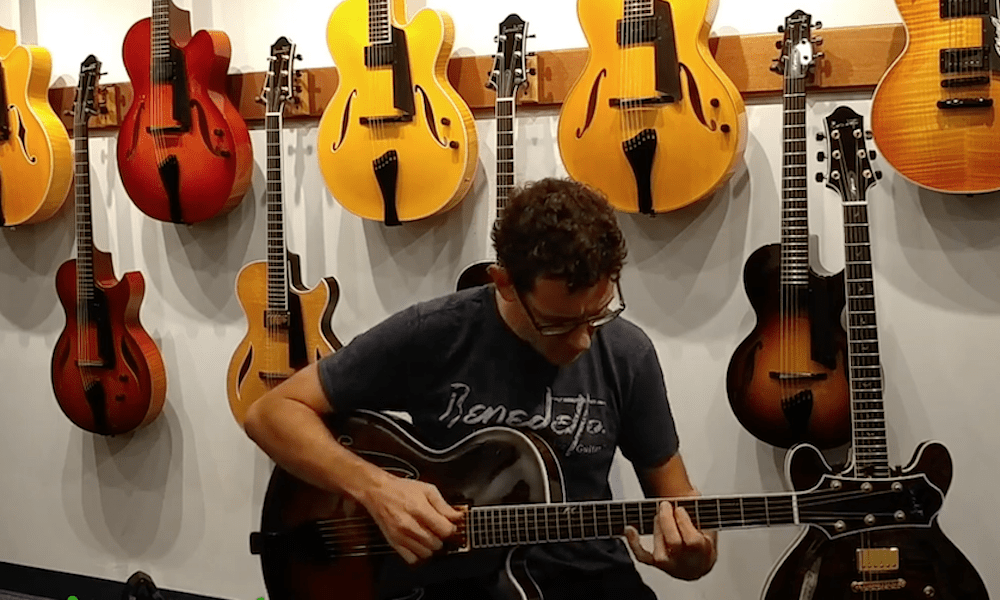Features
What Guitar to take to the Gig???

There has been a lot of discussion lately about “what guitars are best for Jazz”?
In previous Jazz Guitar Today articles we make the case that it is not the guitar that defines the music – but rather the player and the music itself. You can play 2 5 1 changes, corresponding scales and lines on any guitar. There are many examples of jazz players playing all varieties of guitars from solid ‘Teles’ to carved ‘New Yorkers’ and all of the music falling beautifully into the category of jazz.
So if you are wondering…. what guitar is best for me?
What are the differences I may prefer? The video provides an example of two very popular styles of guitar and how their construction/ acoustic properties effects their sound and feel. Of course, there are many more examples – but the guitars in the video are among the most popular.
Disclaimer, this is not a scientific method experiment. This is a brief demo put together by one of the premier builders to illustrate a point as a place to start when considering your choices. Also important to note, sound is easier to demonstrate than feel. ‘Feel’ or electro-acoustic response is how the guitar acts when you play a note. The feel varies not only from guitar to guitar and amp to amp – but also with string manufacturers, string gauges, tone settings on the amp and guitar, etc. ‘Feel’ is virtually impossible to demonstrate in video but readily apparent once you sit down with an instrument.
Note: Hard to properly evaluate the detail and differences on computer speakers or a phone. I listened over Shure SRH 940 headphones – the differences were very apparent.
Acoustically, the differences are obvious.
The all solid wood carved ‘archtop’ has considerably more acoustic output, as well as a more pleasing acoustic tone with a much richer overtone series (harmonics). This makes it a very warm instrument played up close and intimately with no amp. The ‘thinline’ in the video is solid with the back and sides one piece that has been carved out of a solid block. Therefore, this guitar has virtually no real acoustic output – making amplification a necessity. I will say the solid construction of this particular thinline does a nice job of retaining some of the acoustic character while amplified.
Plugged in – the archtop retains a lot of the acoustic character…
…which makes it especially desirable for the more classic sound of the great American Songbook type material. Excellent for solo playing, backing vocalist, and even going up to the organ trio levels of output and doing all of that extremely well… it is very warm and at the same time can be very punchy.
The thinline guitar takes advantage of its design with less acoustic output, relying solely on electric amplification – this makes the notes seem noticeably larger or louder, denser and bigger.
Also, the guitar can be played louder before feedback (a major concern for many venues). The flexibility of the thinline plays nicely for the “Songbook” – but in my opinion, it is not its best application. While the thinline is not as harmonically rich, its strengths are considerable. This guitar can go straight to overdriven blues, rock, funk, and country which it does quite well. The Archtop cannot easily get those overdriven “hairy” tones at modern stage levels.
The video demonstrates this very well. Listen to the quality of the low strings on the thin line. They are very strong and “full” albeit less rich. The second and easily just as important advantage of the thin line is the second pickup and the versatility it affords. This is why players like Larry Carlton moved to a 335 back in the day. He said he could go from “session to session and take only one guitar,” verses having a carting company drop off and pick up several instruments.
Personally, if I’m looking for that traditional tone, the archtop is my clear choice. The richness and feel are just irreplaceable in that application. They sound great and nail that vibe. However, when my gigs and music cross genres, the thinline is a more practical choice. The versatility of the thinline is its strong suit and it does many things very well.
Regardless what guitar you choose, no doubt there are compromises, positives and negatives, etc. Watch (listen to) the video, I hope it helps. Of course, if you have any comments, would like to hear from you!
Bob Bakert – editor
-
Jazz Guitar Lessons2 weeks ago
New JGT Guitar Lesson: Analyzing “Without A Song”
-
Jazz Guitar Lessons4 weeks ago
New JGT Guitar Lesson: Considering “Falling Grace”
-
Artist Features1 week ago
New Kurt Rosenwinkel JGT Video Podcast – July 2024
-
Artist Features2 weeks ago
JGT Talks To Seattle’s Michael Eskenazi



















